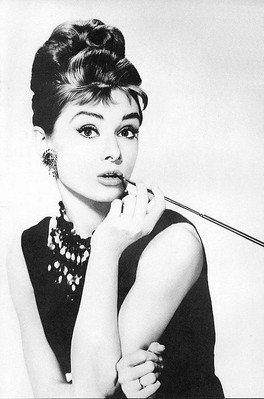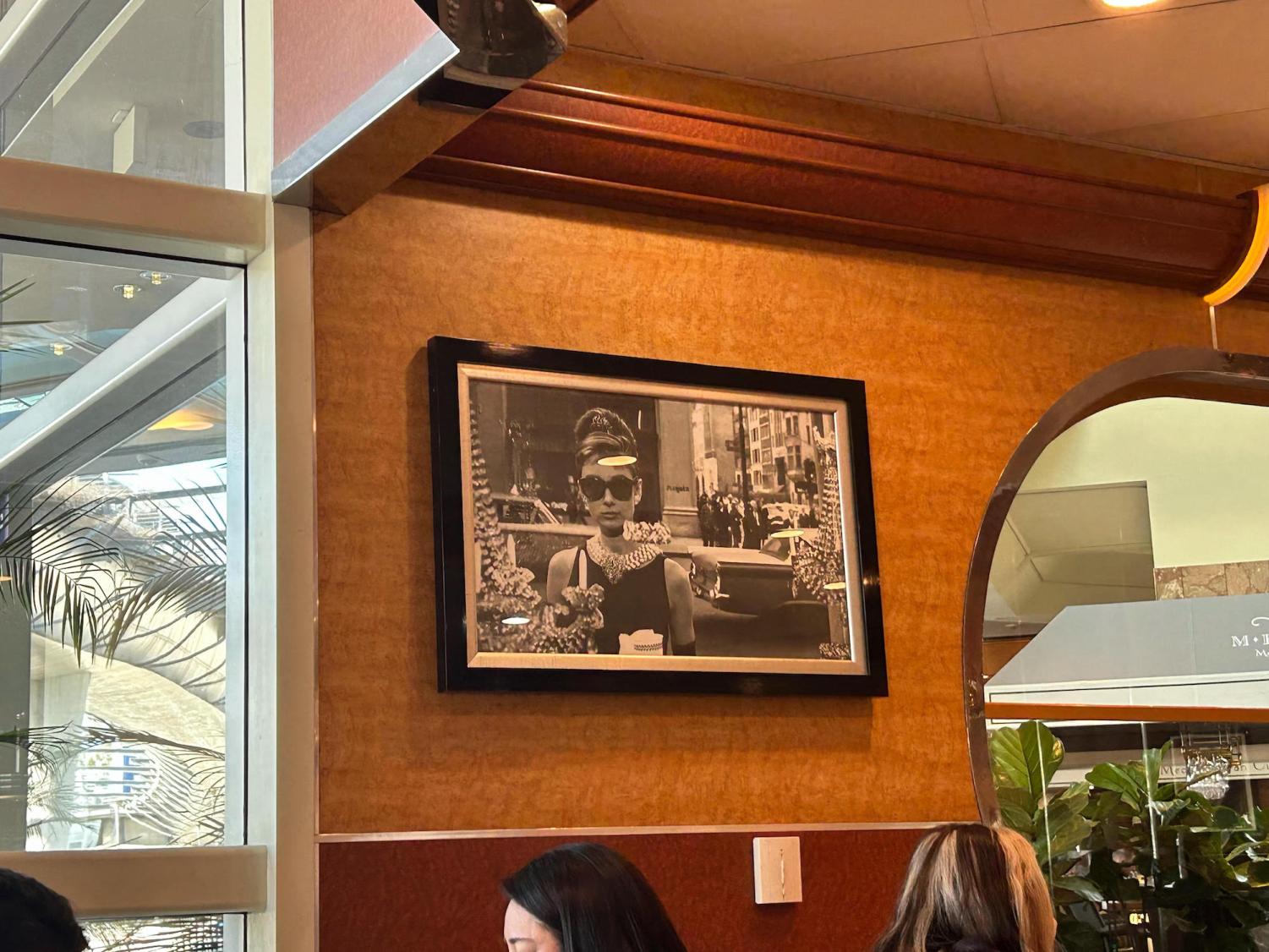Your donation will support the student journalists of Huntington Beach High School. Your contribution will allow us to cover our annual website hosting costs.
Thank you for supporting our program!
Audrey Hepburn: Life Behind the Lights
March 30, 2023
On May 4, 1929, in Brussels Belgium, Emmy, Tony, Grammy, and Academy award-winning Audrey Hepburn was born. However, Hepburn was not immediately known as the actress she is today. At six years old, Hepburn’s father Joseph Victor Anthony abandoned her and her family during World War II. Audrey’s mother, Dutch Baroness Ella Van Heemestra, changed her child’s name to Ella Van Heemestra, masking her British roots and amongst the global conflict. Hepburn attended a boarding school in England, living in Nazi-occupied Holland with Hepburn’s mother initially being a Nazi sympathizer. However, these views radically altered when Audrey’s uncle was brutally imprisoned and murdered. Additionally, amongst conflict, the family endured starvation as their income plummeted. The family relied on tulip bulbs for nutrition.
As she grew older, Hepburn began to play a role in the Nazi resistance in the 1940s, serving under a former Olympian and anti-German leader, Dr. Hendrik Visser’t Hooft, helping doctors forge identity documents to aid those in hiding. Further aiding, she delivered a resistance newspaper by bicycle, Oranjekrant (Orange paper) was written on a paper small enough to fit into her woolen socks, and delivered in secrecy. Additionally, she served through her passion for ballet, giving illegal dance performances to raise funds for the Dutch Underground.

A Huntington Beach High School (HBHS) fan of Hepburn, Ella Navarro, expressed she was surprised when learning about Hepburn’s hardships. “I didn’t know Audrey Hepburn lived through World War II. It blows my mind because when you think of her, you think of her famous movies and not the suffering that she endured in her childhood.”
Following the traumas of WWII, Hepburn modeled as well as studied ballet at the Arnhem Conservatory of Netherlands as she learned five different languages upon her study. Therefore, leading to her launching her dreams of a career as a prima ballerina starring as a chorus girl in “High Button Shoes: in 1948, as well as “Sauce Tartare” and “Piquante.” The limelight adored Hepburn, and although she did not initially land the lead role in ballet productions because of the malnutrition she endured in childhood, weakening her body, she was eventually chosen for a starring role in the hit Broadway release of “Gigi” in 1951.
The star was on the rise through acting, and the camera and viewers adored her elegance. Hepburn continued to star in major roles such as “Roman Holiday,” “Breakfast at Tiffany’s,” “War and Peace,” and “Funny Face.”
A fan of Hepburn and HBHS sophomore student Alyson Nguyen calls “Breakfast at Tiffany’s” “a cinematic classic.”

Hepburn continued to land major roles in her career, with her final appearance on the Broadway stage, Hepburn won a Tony award for her performance in “Ondine,” leading to her marrying her co-star Mel Ferrer.
The star on the rise also landed the lead role in major films, such as the 1954s “Sabrina” alongside Humphrey Bogart and William Holding landing her an Academy Award nomination for her performance. Throughout filming, Hepburn and Holden begin an affair leading to Holden agreeing to abandon his wife and children for Hepburn. However, Hepburn adored children leading to her immediately breaking it off with him once she discovered Holden had received a vasectomy year prior.
In addition, during filming “The Nun’s Story, Hepburn allegedly had an affair with the film’s screenwriter Robert Anderson, as she was compelled to have an affair after hearing rumors of her husband Ferrer’s affairs with other women. Considering it was no secret Ferrer had his own share of affairs, the couple was continually happily married for over 14 years despite their major affair, consequently, together having a son, Sean Hepburn Ferrer. There were difficulties during her pregnancy as she suffered from a miscarriage and stillbirth from falling off a horse while shooting the film “Unforgiven” previously.
However, a year after Hepburn finally divorced Ferrer in November 1968 who is known to be a “neurotic” perfectionist. Shortly after her divorce from Ferrer, Hepburn met psychiatrist Andrea Dotti on a cruise aboard a yacht in June 1968, leading to her marriage with Dotti the year following. Consequently, the newlywed couple had Luca Dotti for four years following their marriage. After the recent birth of her second son, Hepburn left Hollywood for nearly a decade to focus on her familial obligations in Switzerland.
Amidst her time in Switzerland, Hepburn dealt with major rumors of Dotti’s inappropriate affairs with young women and another miscarriage in 1974. Nearly a decade later, Hepburn returned to Hollywood to star in the film “Bloodline” with Ben Gazzara. The duo were both unhappy with their marriages and allegedly had an affair together on set, yet later both went back to their unhappy relationships. By 1982, rumors of Dotti’s affairs were posted in the press leading to the duo’s divorce and end of the 13-year marriage.

Finally, by 1980, Hepburn fell in love with Dutch actor and businessman Robert Wolders. Although they never officially married, Hepburn stated she definitely saw him as a husband figure to her. Eventually, as she grew older, Hepburn strayed away from stardom and focused on humanitarian work in her later years. She utilized her platform to bring attention to children’s malnutrition by becoming a United Nations Children’s Fund or UNICEF goodwill ambassador. As ambassador, Hepburn participated in over 50 trips visiting UNICEF projects in Asia, Africa, Central, and South America.
Sophomore HBHS ASB president, Kai Wong, admires Hepburn for her efforts, and said, “One of the main reasons I love Audrey Hepburn is how she provided humanitarian aid to children and I feel that is a true testament to her character as I believe she is not trying to act as an act of white savior but rather someone who truly cares about this world and helping others.”
Aboard one of her UNICEF trips, Hepburn was reportedly diagnosed with a rare cancer entitled pseudomyxoma peritonei, which is in the same family as colon cancer, leading to her coming back to Switzerland to battle it. Succeeding her diagnosis, President George Bush awarded Hepburn the Presidential Medal of Freedom in December 1992 to honor her work alongside UNICEF, although Hepburn was too ill to attend the ceremony. Eventually, Hepburn grew too weak and lost the battle, dying on January 20, 1993. Following her death, her sons established Audrey Hepburn Memorial Fund at UNICEF to continue humanitarian work, now known as the Audrey Hepburn Society at the US fund for UNICEF.
Overall, the collection of her renowned movies as well as her work with the United Nations to help our community prove Hepburn’s immense impact on our world even decades after her death. Displaying how the well-commemorated Audrey Hepburn is undoubtedly an icon to remember, Hepburn, inspires others with lasting quotes such as, “to plant a garden is to believe in tomorrow.“
